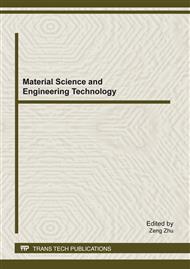p.464
p.468
p.474
p.480
p.487
p.492
p.500
p.506
p.512
Study on Conditions of Over-the-Horizon Detection Basing on Evaporation Duct
Abstract:
The highest frequency duct is evaporation duct under marine atmospheric environment, and it is a special method of expanding the radar measuring range by using the evaporation duct to achieve the over-the-horizon detection. On what conditions to ensure the realization of the over-the-horizon radar detection is one of key problems. Many aspects, such as evaporation duct discrimination, radar working wavelength and frequency, initial launching angle and the location of radar are studied to get the necessary conditions of the over-the-horizon radar detection. The results show that the four kinds of necessary conditions must meet at the same time instead of only one certain condition, which lays a necessary foundation for the marine radar, ship radar and communication system to exert the largest effects in the evaporation duct environment.
Info:
Periodical:
Pages:
487-491
Citation:
Online since:
February 2012
Authors:
Keywords:
Price:
Сopyright:
© 2012 Trans Tech Publications Ltd. All Rights Reserved
Share:
Citation:


